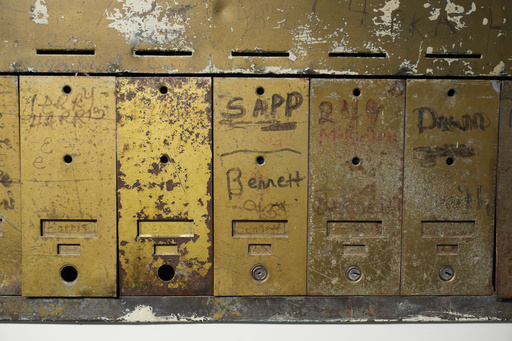Amidst a once-neglected 1938 structure located on Chicago’s near West Side, an innovative museum has emerged with a mission to alter the narrative surrounding public housing in America. This institution, borne out of a $17.5 million revitalization of a former federal housing project, opens its doors this Friday—the National Public Housing Museum.
Initiated by public housing residents, the museum aims to deliver a comprehensive portrayal of their experiences, encompassing the camaraderie of close-knit communities alongside the repercussions of discriminatory housing policies. “The most significant artifact we possess is the building itself,” remarked Lisa Yun Lee, the museum’s executive director.
Visitors are welcomed by remnants of a deteriorating wall, adorned with cracks and graffiti. Displayed nearby are original mailboxes featuring hand-written apartment numbers, alongside personal items of Supreme Court Justice Sonia Sotomayor, who spent her childhood in New York’s public housing. An outdoor garden, decorated with vintage animal statues, once embellished a Chicago public housing complex.
The museum’s creators aspire to revitalize such communal environments, emphasizing the significance of its location in Chicago’s Little Italy. The museum’s infrastructure includes 15 brand-new public housing units. Adjacent to it is a city library branch offering affordable housing options, while a mixed-income development is also underway close by. “This is a museum proclaiming, ‘There are essentials everyone deserves,'” summarized Sunny Fischer, a foundation consultant who grew up in public housing and presides over the museum’s board.
Admission to the museum is free, though guided tours are ticketed. The launch of the museum faced setbacks, hindered by financial hurdles and shifting mayoral priorities. The building was contributed by the federal Department of Housing and Urban Development, with the $17.5 million refurbishment funded by a blend of private donations from foundations alongside state and federal contributions.
The idea for the museum was conceived around 18 years ago, during a time when Chicago, the country’s third-largest city, was dismantling its public housing towers as part of a controversial urban revitalization plan. This initiative, which displaced countless families, involved the demolition of Cabrini-Green, a notorious housing project depicted in the “Candyman” horror series. Residents were determined to preserve their stories and not let them vanish along with the high-rises. Among the initiators of this endeavor was activist Francine Washington, who has spent nearly her entire life within Chicago’s public housing. Having raised a family and worked various jobs there, she sits on the museum’s board. Washington anticipates this platform will work to dismantle stereotypes surrounding public housing residents, illustrating achievements and resilience.
One imperative objective of the museum is to exhibit the shifting racial dynamics in public housing through different decades, a change primarily attributed to discriminatory housing policies and practices. Black tenants, in particular, were often relegated to segregated, high-rise apartments with limited opportunities for mobility.
In the rehabilitated Jane Addams Homes building, the museum presents restored apartments furnished with authentic artifacts donated by former residents’ families, including clothes and kitchenware. The 1930s apartment reflects the home of a Jewish family, while the 1950s apartment belonged to an Italian family. The 1970s apartment represents the childhood home of the Rev. Marshall Hatch, a noted Black pastor and advocate in Chicago.
Chicago museum organizers drew inspiration from New York City’s Tenement Museum, known for its preserved Lower East Side apartments. However, Chicago’s museum enhanced the experience with technology, embedding recorded oral histories that autoplay as visitors pass through, handheld digital screens, and a shadow-puppet theater company’s video detailing the racial barriers, like redlining, faced by Black families in their quest for housing.
Simultaneously, the museum highlights the lesser-known positive aspects of public housing history, celebrating resident-led safety initiatives and cooperative endeavors like grocery distribution. Residents of public housing, labeled as “ambassadors,” are also among the museum’s staff. “We aimed to reshape the story about public housing,” asserted Lee. The term “Cabrini-Green” often prompted visceral responses, typically steeped in race and poverty stereotypes. Developing exhibits that contest those narratives became central to the museum’s vision.
Among the museum’s showcases is the “REC Room,” a music studio where visitors can explore various albums to discover artists who lived in public housing, such as legendary figures like Elvis and Salt-N-Pepa and DJ Spinderella, a museum curator who also grew up in public housing. A prominent black-and-white photograph beams with joy, capturing residents in dance at a Cabrini-Green celebration. This particular display holds fondness for Gentry Quinones, a museum employee residing in Chicago public housing, who acknowledged, “There was also joy and community.”


